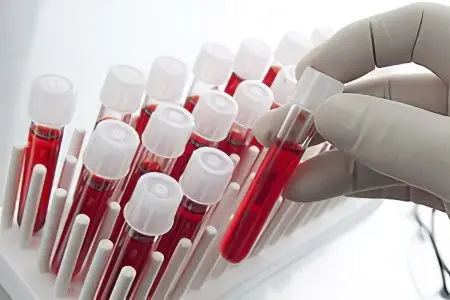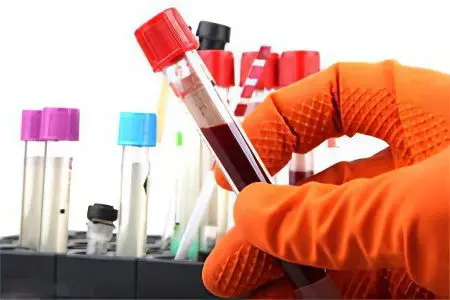Contents

For early diagnosis, testing for HIV infection is used. Methods for diagnosing an infection are constantly being improved, since the main symptoms of the disease do not appear immediately, masquerading as other pathologies. In addition, in laboratory studies, the percentage of both false positive and false negative results is high.
Test systems use blood to determine HIV, less often they use urine and scraping from the oral mucosa.
Stages of diagnosing HIV infection in adults:
Preliminary – screening that selects candidates at risk (presumably infected);
Reference
Confirming – expert stage.
From stage to stage, the complexity, labor intensity and cost of research methods are growing.
Terms used in the course of HIV diagnosis:
Antigen – HIV or its parts (capsule, enzymes, lipids, proteins).
An antibody is a cell of the immune system produced by the body against the introduction of a viral infection.
Seroconversion is an immune response of the defense system against the active reproduction of the virus. Immediately after entering the body, HIV cells begin to actively divide. In response, the concentration of antibodies rises for several weeks. When they reach a certain level (seroconversion), test systems are available for diagnosis. As the concentration of the virus falls, the level of antibodies falls.
“Window period” – the time interval from the moment of infection to the appearance of seroconversion, takes from 1,5 to 3 months. An infected person during this period is especially dangerous as a carrier of infection, since an HIV test shows a false negative result, although the risk of transmitting the disease is extremely high.
Screening stage of HIV diagnostics

During screening, enzyme immunoassay (ELISA) is performed to determine the total antibodies to HIV-1 and HIV-2. It shows accurate results no earlier than 3-6 months after infection, although there are exceptions: it can detect antibodies to HIV 3-5 weeks after a dangerous contact.
Test systems of the fourth generation are the most accurate. In addition to antibodies to the virus, they are able to determine also the antigen to HIV (p-24-capsid), which makes it possible to detect the virus even in the “window period”, before the appearance of antibodies.
The high cost of such test systems forces in many countries to use systems of the third and even second generation, which determine only the presence of antibodies.
Such systems give false positive results under the following conditions:
Infection during pregnancy;
Autoimmune diseases: psoriasis, rheumatism, systemic lupus erythematosus;
The presence of the Epstein-Barr virus.
With a positive result of the enzyme immunoassay, they proceed to the next stage of diagnosis.
Reference step in HIV diagnosis
A double diagnosis is used with more sensitive test systems. Two positive results are a reason to move to the next level of diagnostics.
Expert stage – immunoblotting

At this stage, antibodies to individual proteins of the human immunodeficiency virus are determined.
Stages of the expert stage:
Destruction of the virus into individual antigens by electrophoresis.
Transfer of antigens using the blotting method to special strips with pre-applied proteins characteristic of HIV.
Fixing the reaction that occurs if the patient’s blood contains antibodies to antigens.
There is a small risk of error – a false negative result. It is possible if the study occurs in the terminal stage of the disease or in the “window period”.
In combination with other tests, the PCR method (polymerase chain reaction) is used. It is characterized by increased sensitivity to the virus, which can lead to a high proportion of false positive results.
Diagnosis in children whose mothers are HIV-infected

Testing of such children has its own characteristics – the mother’s antibodies to HIV may be present in the child’s blood, which crossed the placenta during childbirth. They can last up to 15-18 months from the birth of the baby. if there are no such antibodies, this is not one hundred percent proof that the child is not infected with the virus.
Diagnosis tactics in children born from HIV-infected mothers:
In the first month of life – PCR, since during this period the virus does not actively multiply;
Older than a month – a test for the determination of the p-23-Capsid antigen;
Diagnostic measures up to 36 months of life.









